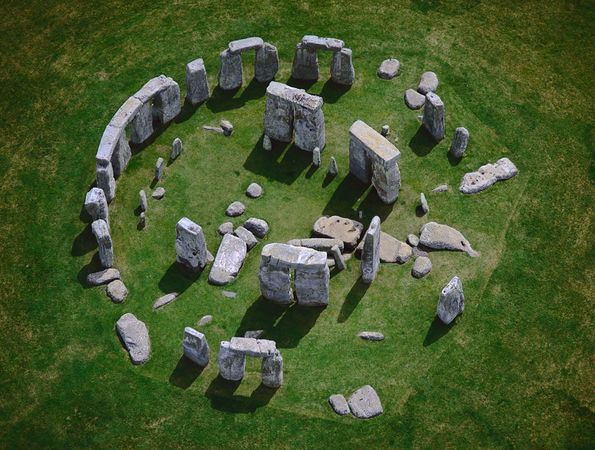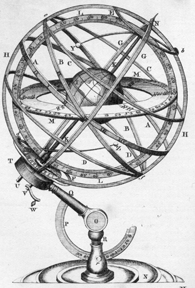Discovering the paths traced by celestial object across the sky is a common theme in many introductory astronomy courses. It’s not as simple as “rises in the East, sets in the West. ” The patterns are a complex combination of the daily rotation of the Earth, the tilt of the Earth’s axis, the observer’s location on Earth and the Earth’s revolution around the Sun. The patterns are so complex, for 1000’s of years we’ve been using computers to simulate the patterns and, most importantly, make predictions. Here are a few familiar computers:

Stonehenge (Jason Hawkes, Corbis Images)

Armillary Sphere (Wikipedia Commons)
Fully exploring these patterns is not possible in the few, 50-minute tutorials we hold at UBC. We tackle a much smaller pattern: the daily and annual path of the Sun across the sky as seen by observers in Vancouver (latitude 49 degrees North.) These materials are customized for that latitude but, with a little work, can be altered.
The computer we use to collect data is an actual computer, running the excellent NAAP “Motions of the Sun Simulation”

Motions of the Sun simulator at astro.unl.edu/naap
We don’t want this 50-minute activity to be about computers or how to use them. Instead, students use the computer to collect data while keeping the bigger picture, the path of the Sun, in focus.
Equipment
We ask groups of 2-3 students to work together, sharing one computer in the computer lab. Students are encouraged to bring their own computers, too. The computers need to be capable of running Flash through a web browser. The only other equipment is some coloured pens and a projector to project the simulation so the teaching assistant can demonstrate how to collect data.
Materials
- Each group of students receives a sequence of worksheets to guide them through the activity PathoftheSun.tex PathoftheSun.pdf
- The .tex file includes (via \includegraphics{}) a number of postscript figures
- stonehenge_JHawkesCorbis.ps
- EB1711_Armillary_Sphere_WikipediaCommons.ps
- NAAPGUI.ps
- SkyGraphicNoDates.ps
- SkyGraphicMarJun.ps
- SkyGraphicSepDec.psSkyGraphicMarJunSepDec.ps
- The “SkyGraphics” were created first in Powerpoint SkyGraphics.pptx They were exported as .png, opened in Photoshop and saved as .ps. With a little Powerpoint finesse, you can alter the graphics for different latitudes.
Instructor’s Guide
Like all of these activities, we created an instructor’s guide
InstructorsGuide_PathoftheSun.tex InstructorsGuide_PathoftheSun.pdf This guide is not just a recipe for how to run the activity: we trying to train our teaching assistant how to teach astronomy and following a recipe is not an effective mode of learning. Sure, the instructor’s guide runs through a sequence of actions that must be taken but we’ve tried to justify, from an educational point-of-view, why these steps occur and why they occur in this order. The guides often include sample scripts teaching assistants can use to move the students and the activity forward.
Credit
Unless credit is given explicitly, all documents, graphics and images are licensed under a  Creative Commons Attribution-NonCommercial-ShareAlike 3.0 Unported License. This work is supported by the Carl Wieman Science Education Initiative.
Creative Commons Attribution-NonCommercial-ShareAlike 3.0 Unported License. This work is supported by the Carl Wieman Science Education Initiative.
Your feedback, comments, suggestions
If you use the materials here and find a alternate approach, tweak or extension, please share it by leaving a comment. Thanks!
